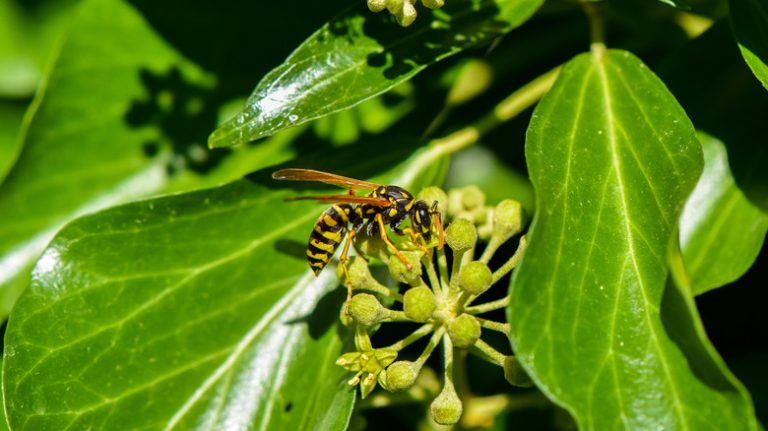Larkspur flowers are a pretty addition to any garden. A member of the Delphinium family, these stunning flowers come in a range of colors and varieties. Larkspurs are fairly low maintenance, making them a popular choice for both experienced and novice gardeners.
When it comes to growing larkspur flowers, the key is to provide them with a well-drained soil and a sunny location. They are heavy feeders and benefit from regular fertilization. Larkspurs can be grown from seeds or purchased as young plants, although growing them from seeds is generally less expensive.
One common problem when growing larkspurs is slugs and snails. These pests can easily damage the delicate shoots and foliage of the plant. To protect your larkspurs, it is recommended to stake them and surround the base with a barrier, such as crushed eggshells or diatomaceous earth.
Larkspurs are known for their tall, stately growth and beautiful flowering spikes. They are available in both annual and perennial varieties, with the latter being longer-lived but often less vigorous. The ‘Magic Fountain’ series and the ‘Cinderella’ variety are particularly popular choices.
In terms of care, larkspurs prefer cool summers and can suffer in hot, humid climates. They are also prone to root rot if overwatered, so it is important to provide adequate drainage. Larkspurs can be dried and used in floral arrangements, adding a touch of elegance to any home.
Overall, larkspurs are a sublime addition to any garden. With a little effort and proper care, these beautiful flowers will reward you with a flush of stunning blooms in the spring. If you have any experiences or advice for growing larkspurs, please do share!
Footer: This article was written by Thompson Morgan.
Larkspur Seeds
If you want to add a splash of color to your garden in spring, consider planting larkspur seeds. These beautiful flowers can provide a vibrant fountain of blue, white, or pink blooms that are sure to brighten up any space.
When selecting larkspur seeds, it’s important to choose a variety that is well-suited to your climate and growing conditions. Larkspurs prefer well-drained soil, so make sure to choose a spot in your garden that is not prone to flooding. They are also perennials, so select a series that will provide beautiful blooms year after year.
The history of larkspurs is quite interesting. Some species of larkspur can grow quite tall, reaching heights of 6 feet or more. Others are shorter and compact, making them a good choice for smaller spaces. One well-known series, called the Sublime series, is known for its taller and more elegant plants.
When it comes to planting larkspur seeds, take care to place them in a spot that is protected from strong winds. Larkspurs, with their delicate, lacy flowers, can easily be damaged by wind. Additionally, their tall and slender stems may require support, especially in windy conditions.
To plant larkspur seeds, start by preparing the soil. Make sure it is moist but not waterlogged. Then, follow the instructions on the seed packet to determine the proper planting depth and spacing. Cover the seeds with a layer of polythene to help retain moisture. After the seeds have sprouted, be sure to remove the covering to allow the shoots to receive sunlight.
Just like any plant, larkspurs are not without their pests and problems. Snails and slugs can be a common problem, so take steps to keep them away. You can also buy larkspur seeds that are resistant to these pests. Another common issue is powdery mildew, which can be avoided by planting in a well-ventilated area and practicing good garden hygiene.
There are many types of larkspur seeds available, from the classic “Ajacis” to the newer hybrid varieties. The hybrids come in a range of colors, from the traditional blue and white to newer shades such as pink and purple. Some popular hybrid varieties include “Amadeus” and “Faust.”
After your larkspur plants have finished flowering, you may choose to leave them in the garden for their dried seed pods, which can add an interesting touch to your garden. Alternatively, you can cut the flowers and use them in fresh or dried arrangements.
Growing larkspur seeds is relatively easy, and with a little care and maintenance, you can enjoy these beautiful flowers year after year. Whether you are an experienced gardener or someone new to gardening, larkspurs are a great addition to any garden.
How to Plant and Grow Larkspur
Larkspur flowers, known for their tall spikes of colorful blooms, are a beautiful addition to any garden. If you want to grow these stunning flowers in your own garden, follow these steps:
Selecting and Planting Larkspur
| 1. | Choose a well-drained spot in your garden for planting larkspur. They prefer full sun but can tolerate some shade. |
| 2. | Prepare the soil by removing any weeds or rocks. Adding compost or well-rotted manure can improve soil fertility. |
| 3. | Sow larkspur seeds directly in the garden in early spring or late summer. Alternatively, you can start them indoors and transplant them later. |
Caring for Larkspur
Once you have planted your larkspur, there are a few things you need to do to ensure their proper growth:
| 1. | Water the plants regularly, especially during dry spells. Larkspur prefers moist soil. |
| 2. | Protect the young plants from snails and slugs, as they can be a common pest. |
| 3. | Consider staking the taller varieties to prevent them from falling over in windy conditions. |
Harvesting Larkspur
Larkspur flowers generally bloom from late spring to early summer. To enjoy their beauty indoors, you can cut the flower stems just as the lowest buds are beginning to open. Place them in a vase with fresh water and they will last for several days, brightening up your home.
Please note that the entire larkspur plant is poisonous if ingested, so take care when handling it and keep it away from children and pets.
By following these steps and providing the proper care, you can have a beautiful garden full of larkspur flowers. Their stunning blue and white blooms will add a touch of elegance to any landscape.
Delphinium
Delphinium, also known as Larkspur, is a vibrant and strong flowering plant. It belongs to the family Ranunculaceae and is native to the Northern Hemisphere. Delphinium ajacis, commonly known as Rocket Larkspur, is a well-known species of Delphinium.
Delphiniums are known for their tall, majestic spikes of blue flowers that can grow up to 6 feet in height. They are often found in woodlands and meadows, where they add a touch of magic to the whole landscape. The beautiful blue color of Delphiniums makes them a popular choice for gardeners looking to add some color to their gardens.
When planting Delphiniums, it is important to choose a location where they can receive full sun, as well as moist and well-drained soil. They are perennials, so they will come back year after year with minimal effort. However, they also require some support to keep their tall stalks from falling over.
Delphiniums can be propagated by using seeds or by dividing existing plants. If you choose to grow Delphiniums from seeds, it is best to start them indoors in early spring. The seeds are quite small and need to be sown on the surface of the soil. They also need a period of cold stratification to germinate effectively. Once the seedlings are strong enough, they can be transplanted outdoors.
| Common Delphinium Varieties | Meaning | Growth Habits |
|---|---|---|
| ‘Amadeus’ | Sublime and noble beauty | Compact and bushy |
| ‘Faust’ | Dark and mysterious | Tall and stately |
| ‘Imperial White’ | Purity and innocence | Tall with white flowers |
Delphiniums have a long history and are considered to be one of the most ancient perennials. They have been cultivated for centuries and have been associated with various meanings and symbols. In ancient times, the Delphinium flower was believed to have the power to ward off evil spirits and witches. It was also used in potions and spells.
It is important to note that parts of the Delphinium plant are poisonous if ingested, so caution should be exercised if there are children or pets in the garden. Some people may also experience skin irritation when handling the plant. It is always advisable to wear gloves when working with Delphiniums.
In summary, Delphiniums or Larkspurs are beautiful flowering plants that add a touch of elegance to any garden. With their tall spikes of blue flowers and their rich history, they are a favorite among gardeners. Whether growing them as annuals or perennials, Delphiniums require some care and attention but are definitely worth the effort.
Larkspur: How to Plant, Grow, and Care for the Dangerous Larkspur Flower
The Larkspur flower, also known as delphiniums, comes in a variety of colors and is loved by many gardeners for its beauty. However, it is important to be aware that this seemingly sublime flower can be dangerous, as it is poisonous if ingested. In this guide, we will discuss how to safely plant, grow, and care for Larkspur flowers.
Buying and Planting
When buying Larkspur plants or seeds, be sure to select varieties that are suitable for your climate and soil type. Larkspurs prefer well-draining soils, so if you have heavy or clay soils, consider improving drainage by adding organic matter.
Plant Larkspur seeds or small seedlings in the spring or fall, depending on your climate. Choose a location in your garden that receives full sun or partial shade. Larkspurs can tolerate some shade, but they will produce more flowers in full sun.
Before planting, prepare the soil by removing any weeds or large stones. Dig a hole that is twice the size of the root ball and gently place the plant or seeds into the hole. Fill the hole with soil, firming it gently around the plant. Water well immediately after planting.
Growing and Care
Once planted, Larkspur plants require regular watering to keep the soil moist, especially during dry spells. Be sure to water deeply, allowing the water to penetrate the soil and reach the root system. Consider applying a layer of mulch around the base of the plants to help retain moisture.
Larkspurs may require staking to support their tall flower stalks, especially in windy areas. Use wooden or metal stakes and tie the stems loosely to prevent damage. Staking is particularly important for the taller varieties of Larkspurs.
As the Larkspur flowers bloom, you can enjoy their vibrant colors and delicate blooms. Be cautious, though, as the entire plant is toxic if ingested. Keep Larkspur flowers away from children and pets, and be mindful of their presence in your garden.
Pests and Maintenance
Larkspurs can be susceptible to common garden pests, such as aphids and slugs. Monitor your plants regularly and take action immediately if you spot any signs of pest damage. There are various organic pest control options available to help address this problem.
For maintenance, remove any dead or faded flowers to encourage continuous blooming. Larkspurs respond well to deadheading, which means removing spent flowers to stimulate new growth and prolong the blooming period.
In summary, growing Larkspur flowers can be a rewarding experience for any gardener, but it is important to be aware of their poisonous nature. By following the guidelines mentioned above, you can enjoy the beauty and allure of Larkspur flowers while ensuring the safety of yourself and others.




